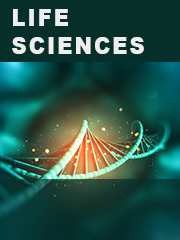Report overview
A biologic is a medicine made using a living system, and historically this was often an animal. Most products being developed as biosimilars are recombinant proteins, or proteins derived from genetically engineered DNA. In this report is a biologic defined as proteins, peptides, hormones or antibodies drugs production by bio-engineered technology, but does not include a vaccine.
A biosimilar in this report is a biologic medical product which is copy of an original product that is manufactured by a different company. Biosimilars are officially approved versions of original ?innovator? products, and can be manufactured when the original product's patent expires.
This report aims to provide a comprehensive presentation of the global market for Biologics and Biosimilars, with both quantitative and qualitative analysis, to help readers develop business/growth strategies, assess the market competitive situation, analyze their position in the current marketplace, and make informed business decisions regarding Biologics and Biosimilars. This report contains market size and forecasts of Biologics and Biosimilars in global, including the following market information:
Global Biologics and Biosimilars Market Revenue, 2018-2023, 2024-2029, ($ millions)
Global Biologics and Biosimilars Market Sales, 2018-2023, 2024-2029, (K Units)
Global top five Biologics and Biosimilars companies in 2022 (%)
The global Biologics and Biosimilars market was valued at US$ 198790 million in 2022 and is projected to reach US$ 277500 million by 2029, at a CAGR of 4.9% during the forecast period. The influence of COVID-19 and the Russia-Ukraine War were considered while estimating market sizes.
The major global manufacturers of biologics and biosimilars are Roche, Amgen, AbbVie, Sanofi-Aventis, Johnson & Johnson, Pfizer, Novo Nordisk, Eli Lilly, Novartis, Merck, Sansheng Pharmaceuticals, Changchun Gaoxin, CITICS Guojia, Baitai Biotech, Sijin Biotech, Cinda Biotech, Tonghua Dongbao, Ganli and Union Pharmaceuticals, etc. Roche, Amgen and AbbVie are the top three, with a combined market share of about 37%.
We surveyed the Biologics and Biosimilars manufacturers, suppliers, distributors and industry experts on this industry, involving the sales, revenue, demand, price change, product type, recent development and plan, industry trends, drivers, challenges, obstacles, and potential risks.
Total Market by Segment:
Global Biologics and Biosimilars Market, by Type, 2018-2023, 2024-2029 ($ Millions) & (K Units)
Global Biologics and Biosimilars Market Segment Percentages, by Type, 2022 (%)
Monoclonal Antibodies
Interferon
Erythropoietin
Insulin
Vaccines
Others
Global Biologics and Biosimilars Market, by Application, 2018-2023, 2024-2029 ($ Millions) & (K Units)
Global Biologics and Biosimilars Market Segment Percentages, by Application, 2022 (%)
Tumor
Diabetes
Cardiovascular
Hemophilia
Others
Global Biologics and Biosimilars Market, By Region and Country, 2018-2023, 2024-2029 ($ Millions) & (K Units)
Global Biologics and Biosimilars Market Segment Percentages, By Region and Country, 2022 (%)
North America
US
Canada
Mexico
Europe
Germany
France
U.K.
Italy
Russia
Nordic Countries
Benelux
Rest of Europe
Asia
China
Japan
South Korea
Southeast Asia
India
Rest of Asia
South America
Brazil
Argentina
Rest of South America
Middle East & Africa
Turkey
Israel
Saudi Arabia
UAE
Rest of Middle East & Africa
Competitor Analysis
The report also provides analysis of leading market participants including:
Key companies Biologics and Biosimilars revenues in global market, 2018-2023 (Estimated), ($ millions)
Key companies Biologics and Biosimilars revenues share in global market, 2022 (%)
Key companies Biologics and Biosimilars sales in global market, 2018-2023 (Estimated), (K Units)
Key companies Biologics and Biosimilars sales share in global market, 2022 (%)
Further, the report presents profiles of competitors in the market, key players include:
Roche
Amgen
AbbVie
Sanofi-Aventis
Johnson & Johnson
Pfizer
Novo Nordisk
Eli Lilly
Novartis
Merck
3sbio
Changchun High Tech
CP Guojian
Biotech
Gelgen
Innovent
Dong Bao
Ganlee
United Laboratories
Outline of Major Chapters:
Chapter 1: Introduces the definition of Biologics and Biosimilars, market overview.
Chapter 2: Global Biologics and Biosimilars market size in revenue and volume.
Chapter 3: Detailed analysis of Biologics and Biosimilars manufacturers competitive landscape, price, sales and revenue market share, latest development plan, merger, and acquisition information, etc.
Chapter 4: Provides the analysis of various market segments by type, covering the market size and development potential of each market segment, to help readers find the blue ocean market in different market segments.
Chapter 5: Provides the analysis of various market segments by application, covering the market size and development potential of each market segment, to help readers find the blue ocean market in different downstream markets.
Chapter 6: Sales of Biologics and Biosimilars in regional level and country level. It provides a quantitative analysis of the market size and development potential of each region and its main countries and introduces the market development, future development prospects, market space of each country in the world.
Chapter 7: Provides profiles of key players, introducing the basic situation of the main companies in the market in detail, including product sales, revenue, price, gross margin, product introduction, recent development, etc.
Chapter 8: Global Biologics and Biosimilars capacity by region & country.
Chapter 9: Introduces the market dynamics, latest developments of the market, the driving factors and restrictive factors of the market, the challenges and risks faced by manufacturers in the industry, and the analysis of relevant policies in the industry.
Chapter 10: Analysis of industrial chain, including the upstream and downstream of the industry.
Chapter 11: The main points and conclusions of the report.
